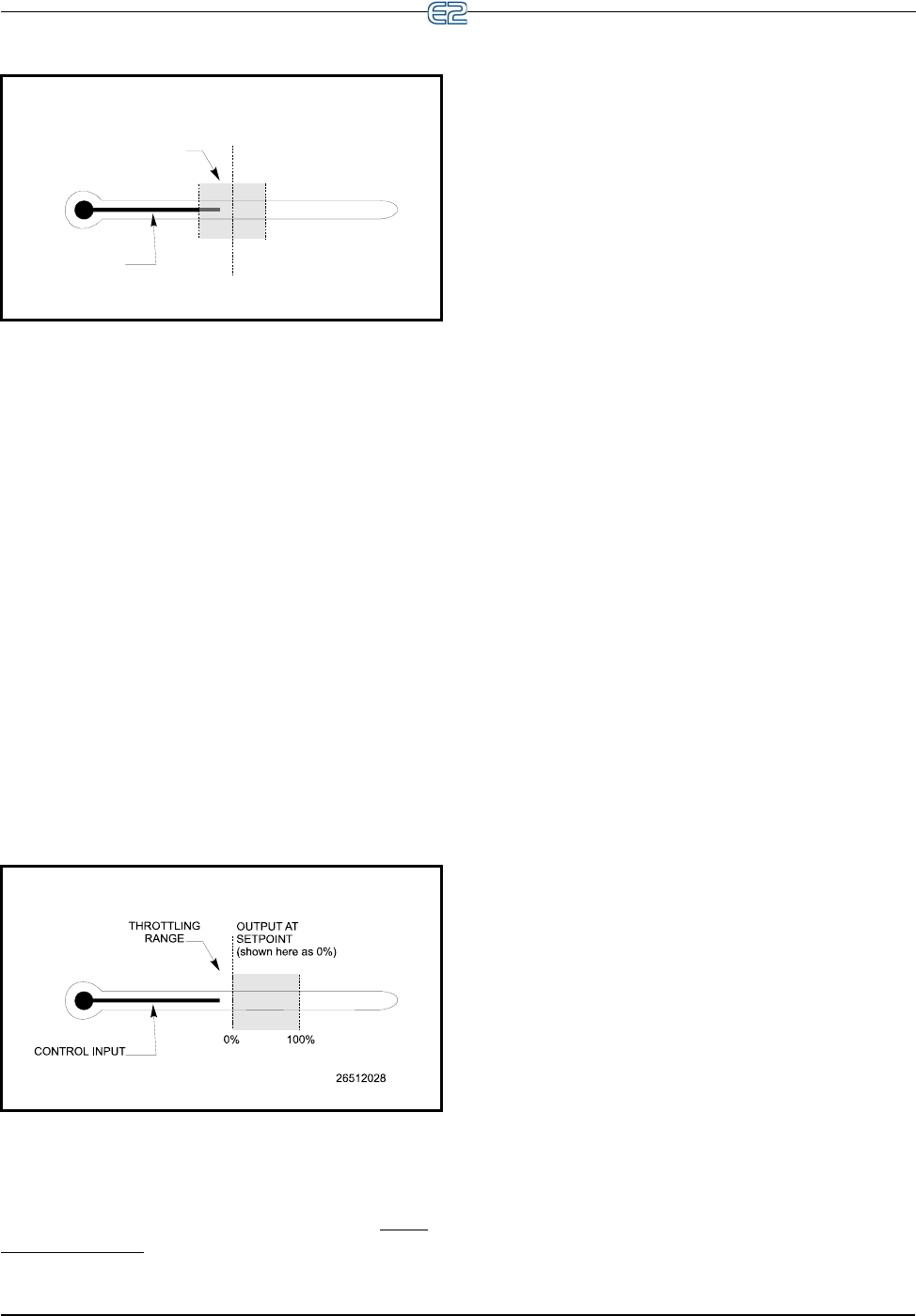
Other PID Features Appendix D: PID Control • D-5
Therefore, as the input value gradually drops below the
setpoint, the Proportional Mode of PID will gradually
bring the output percentage down. When the input drops
below the low end of the throttling range, the output will
be zero.
The opposite happens with the input value begins to
rise above the setpoint. The output percentage is gradually
brought up from 50% until, when the input is at or above
the throttling range, Proportional Mode will bring the out-
put to 100%.
Output at Setpoint for Condenser/HVAC
PID Control
For Condenser and HVAC PID Control, the Output at
Setpoint defaults to 0%. This places the 0% end of the
Throttling Range at the setpoint value, and it generally
means Proportional Mode will strive to pull the input back
down below the setpoint and attain a 0% output percent-
age. As the input climbs from the setpoint to the top of the
Throttling Range, Proportional Mode likewise increases
the output percentage to 100%.
The differences between the two PIDs can be seen by
observing the throttling ranges. For non-Condenser Con-
trol applications, PID reacts to error that exists on either
side of the setpoint. If the input goes lower than the set-
point, the output percentage is dropped from 50% (it is
assumed this will result in the input rising back to the set-
point). Likewise, when the input is higher than the set-
point, the output percentage is raised. For Condenser
Control PID, no reaction is made to an input that is lower
than the setpoint, since the output percentage is already
0%.
Changing the Output at Setpoint
Advanced users may wish to change the Output at Set-
point in order to change the stabilization characteristics of
their system(s). In most cases, the default values of the
Output at Setpoint (0% for Condenser Control and HVAC,
50% for all others) are appropriate and recommended.
Changing the value of the Output at Setpoint may have
some beneficial results, but at the same time it may also
hamper the system’s ability to react to changing condi-
tions, and it may also result in decreased energy efficiency.
Other PID Features
The following section lists other PID-related constants
or control structures that are a part of some PID control
algorithms. Many of these features are advanced features
that are accessible only by service personnel or advanced
users. As a general rule, it is best to contact Retail Solu-
tions before changing any of these values.
Output at Minimum / Output at Max-
imum
The Output at Minimum and Output at Maximum val-
ues are used to change the range of possible output per-
centages. The default values (0% for minimum, 100% for
maximum) allow the output to vary from fully off to fully
on; changing these values, therefore, would only be neces-
sary if you desire a limited output range.
Two things occur when the Output at Minimum or
Output at Maximum values are changed:
1. The throttling range is shortened as dictated by
the new values. For example, if you specified a
20% minimum, the portion of the throttling range
that would usually represent the range of outputs
from 0% to 20% is cut off. Any input value that
falls within the previous 0% to 20% portion of
the throttling range will cause the Proportional
Mode to move the output towards 20%.
2. The Output at Minimum or Output at Maximum
value replaces any calculated adjustment that
would normally call for the output to be outside
of the specified range. In other words, if the Out-
put at Minimum and Output at Maximum values
Figure D-4
- Centered Setpoint PID Control (Output @
Setpoint = 50%)
Figure D-5 - End Setpoint PID Control (Output @ Setpoint =
0%)
26512028
CONTROL INPUT
OUTPUT AT
SETPOINT
(shown here as 50%)
0% 100%
THROTTLING
RANGE


















